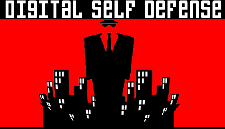
|
 |
|||
|
Black Hat USA Training 2006 |
|
Practical Guide to Deploying DNSSEC |
||||||||
|
Xelerance Corporation |
||||||||
|
What to Bring: Optional is an NFS or SMB (CIFS) client to easily transfer their assignments from their laptops to their virtual Linux server. The student may be required to reconfigure the network settings on their laptop. All other software will be provided by the instructors, and will be accessed by the student via SSH.
|
Overview
Who Should Take This Class: What You Will Learn: The theory of DNSSEC and its new record types (eg DS, KEY, RRSIG and NSEC). Understanding the relationship between zones and their parents for secure delegations. Building and installing DNSSEC software such as Bind9, nsd, ldns, and the Net-DNS-SEC maintenance tools. Deploying and DNSSEC secured zone files, and using the new properties of DNSSEC zones on the client side. Learn about real world DNSSEC deployments, such as in Sweden, the reverse DNS zone with RIPE-NCC, and using DLV for the the Verisign maintained “.com” and “.net” zones. Objectives
All actual work will be done on a Linux Xen server hosting a virtual Linux server per student. |
|||||||
|
Trainer:
|
Michael Richardson has been involved with network security systems since 1988. Michael was a founding employee at Milkyway Networks in 1994, and Solidum Systems Corporation in 1998. While at Milkyway Networks, Michael was responsible for developing the VPN components of the BlackHole firewall, and later worked on several IPsec implementations. Solidum designed and sold hardware - IPsec being an important target. Michael is a system software designer and protocol designer. Michael is involved on a daily basis with the IETF. He is an author on RFC3586, and numerous drafts "in progress". Michael was the lead architect on the Linux FreeS/WAN project, a Linux IPsec stack that aims to bring Opportunistic Encryption to everyone. Michael is now a principle at Xelerance Corporation, the open source security specialists. Michael received a B.Sc. Physics from Carleton University in Ottawa, Canada. Paul Wouters has been involved with Linux networking and security since he co-founded the Dutch ISP Xtended Internet back in 1996, where he started working with FreeS/WAN IPsec in 1999 and with DNSSEC for the .nl domain in 2001. He has been writing since 1997, when his first article about network security was published in LinuxJournal in 1997. Since then, he has written mostly for the Dutch spin-off of the German "c't magazine", focusing on Linux, networking and the impact of the digital world on society. Paul is the main author of the book "Building and Integrating Virtual Private Networks with Openswan", published by Packt Publishing. Paul has presented papers at SANS, OSA, CCC, HAL, Blackhat and Defcon, and several other smaller conferences. He started working for Xelerance in 2003, focusing on IPsec, DNSSEC, Radius and delivering trainings. Paul received a B.Ed Chemistry and Biology from the Noordelijke Hogeschool Leeuwarden in The Netherlands. Patrick Naubert has been involved with network security since 1992 when he founded Resudox Online Services, one of the first ISP in Ottawa, Canada. Patrick also co-founded Milkyway Networks in 1994, and founded Tyger Team Consultants in 1997. As part of Milkway Networks, Patrick installed and configured hundreds of firewall systems. Patrick trained and was responsible for the support of most of Milkway Networks' clients. As the head of Tyger Team Consultants, Patrick was continually involved in clients' vulnerability assessments and network architecture reviews. Patrick has now joined Xelerance Corporation as their Chief Executive Officer and strives to keep the company on the straight and narrow. In his spare time, Patrick is a CISSP trainer and also teaches Windows Vulnerability Countermeasures. Patrick graduated from Universite de Sherbrooke in Canada in 1990, Bachelor of Computer Science with a Business minor. Patrick is delighted to have no criminal record at this time. |
|||||||
|
Course Length: Two days. All course materials, lunch and two coffee breaks will be provided. A Certificate of Completion will be offered. You must provide your own laptop.
|
||||||||
|
(c) 1996-2007 Black Hat
|
